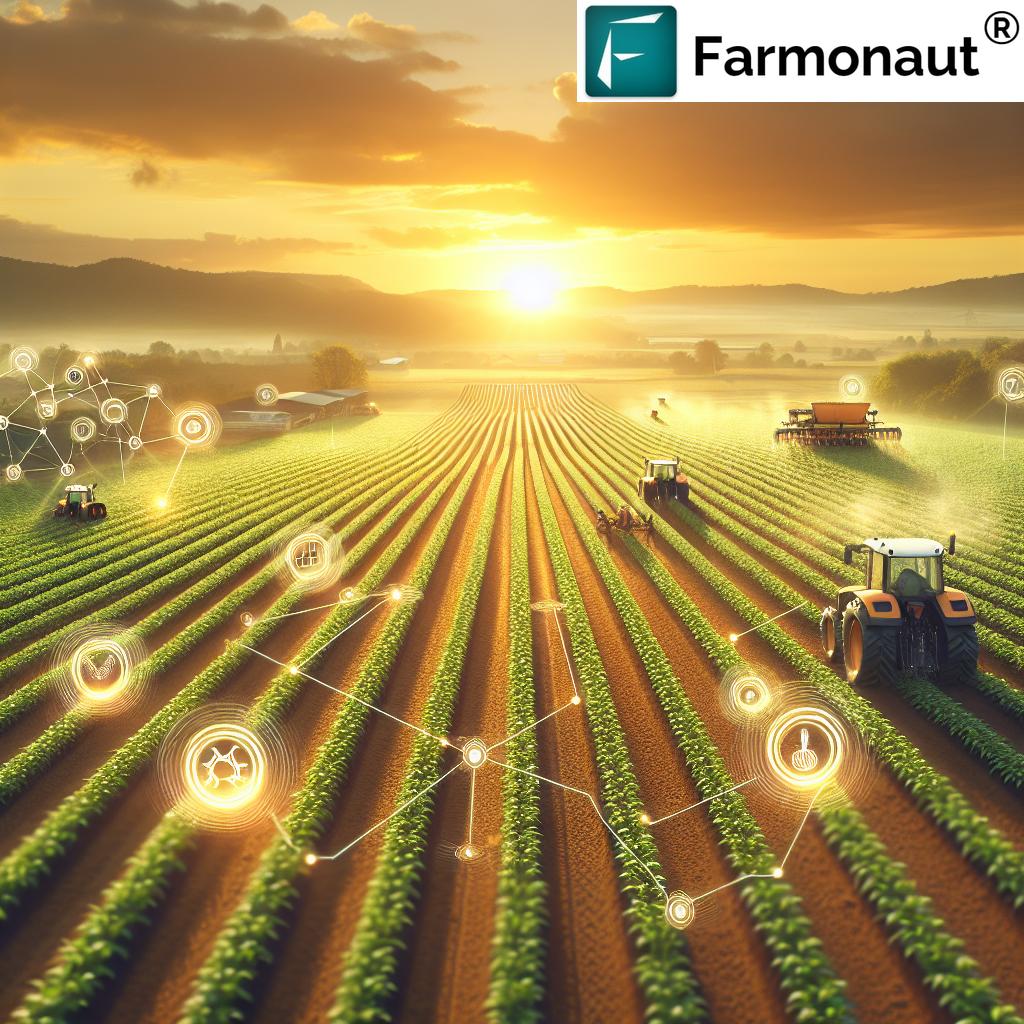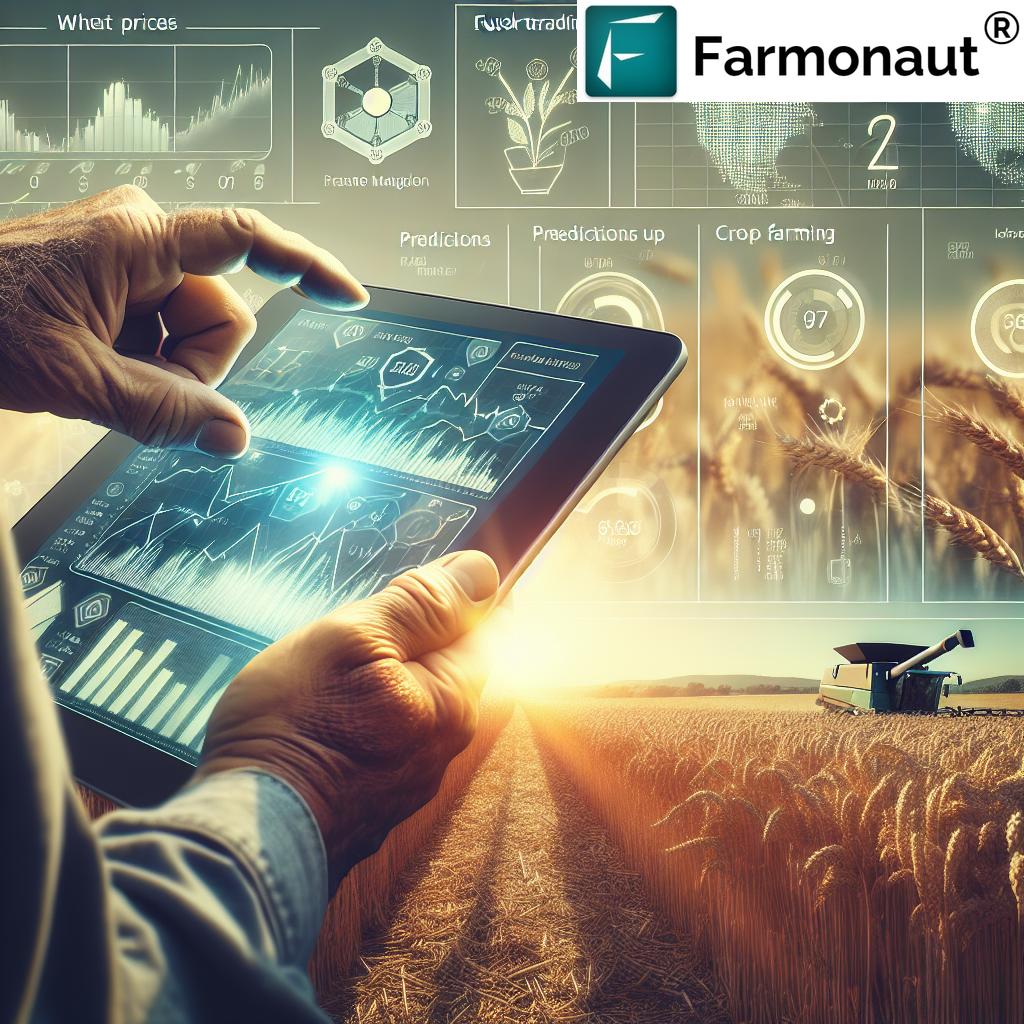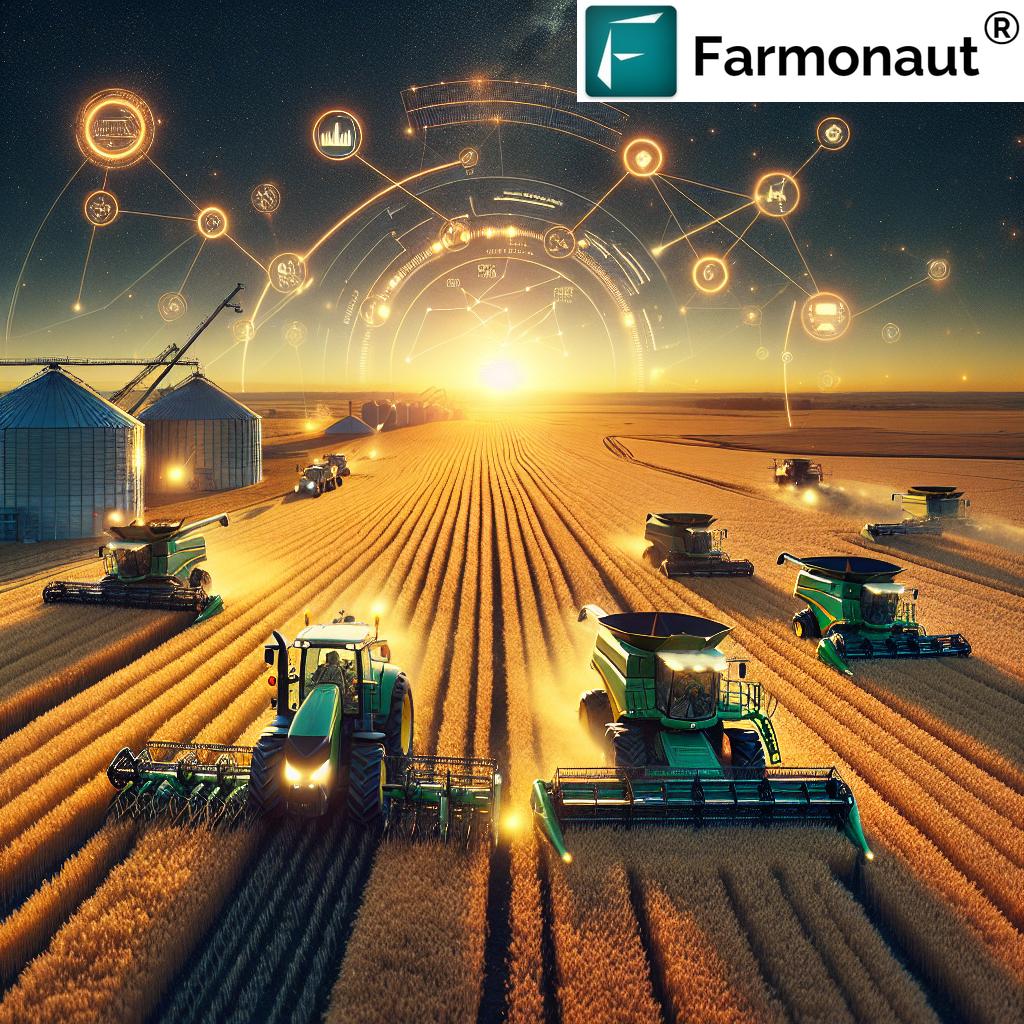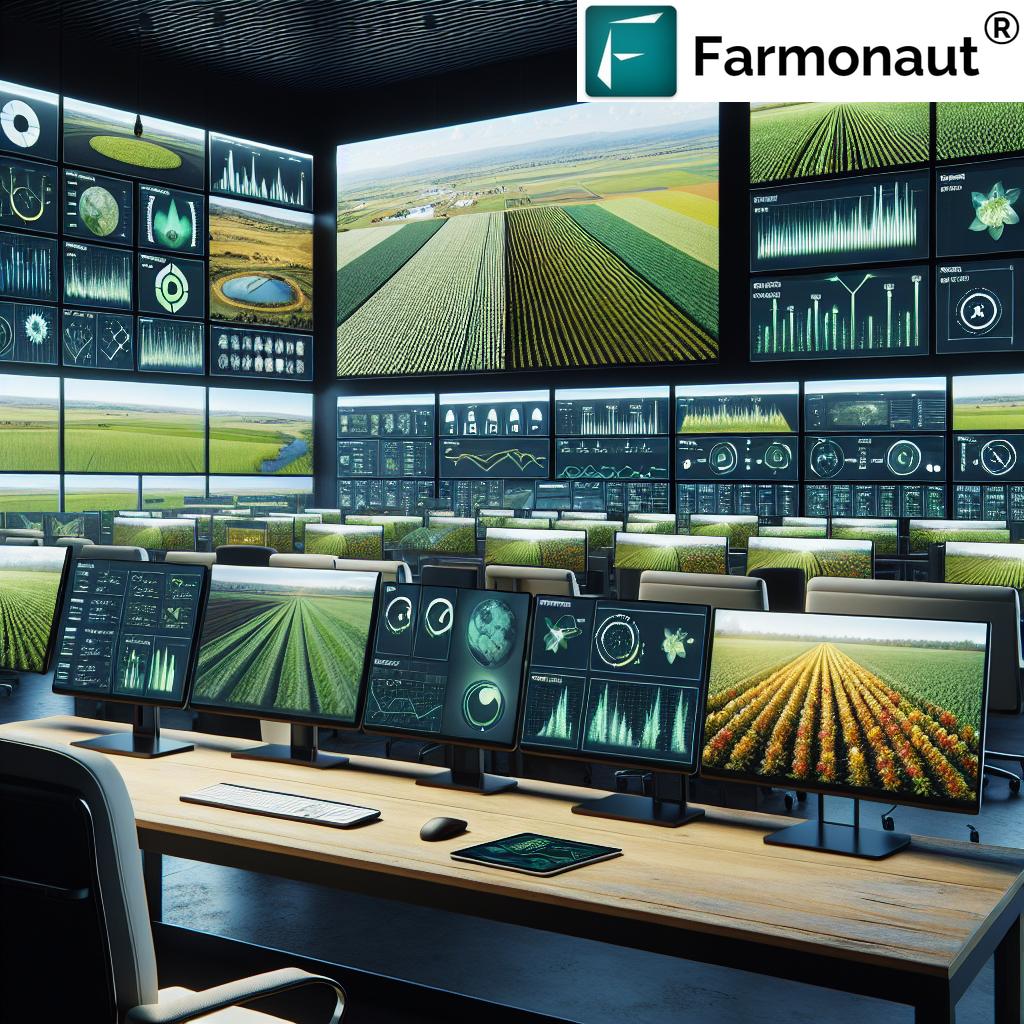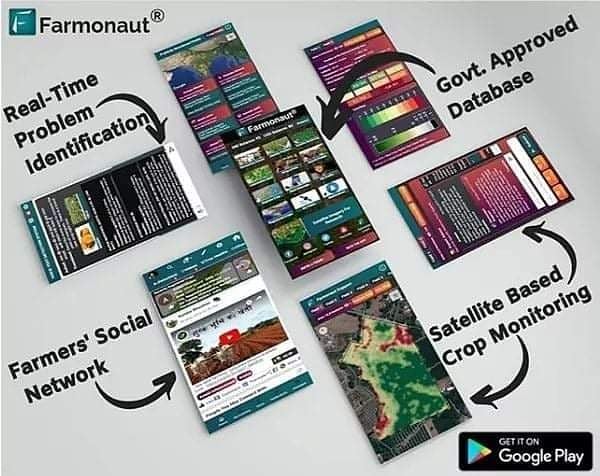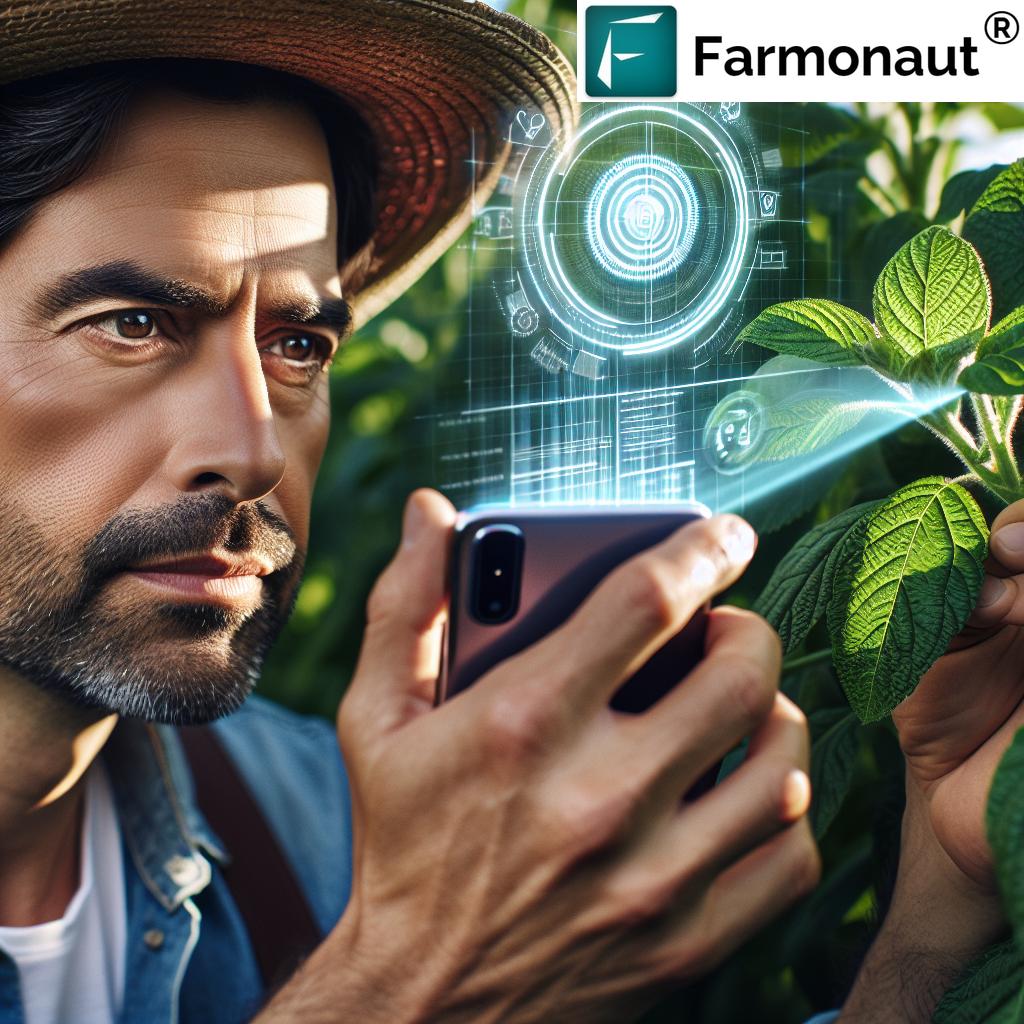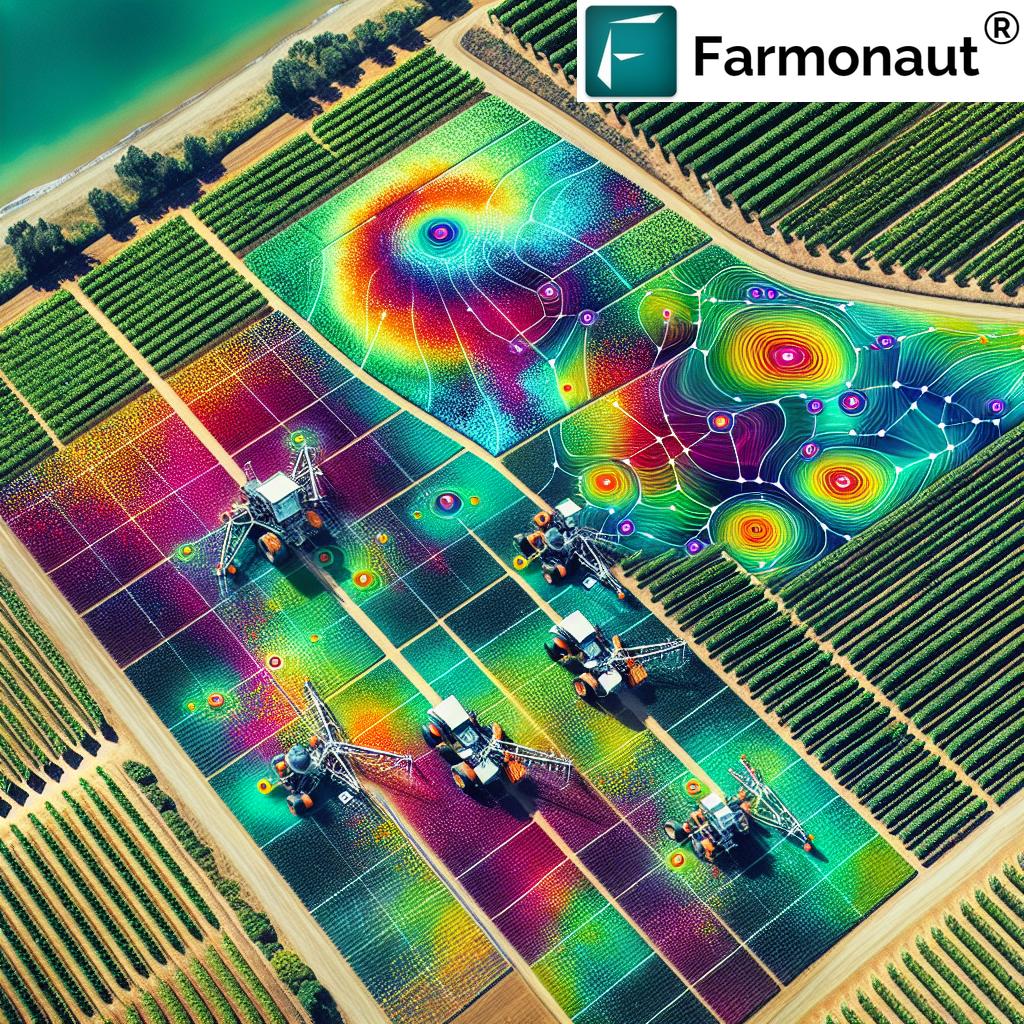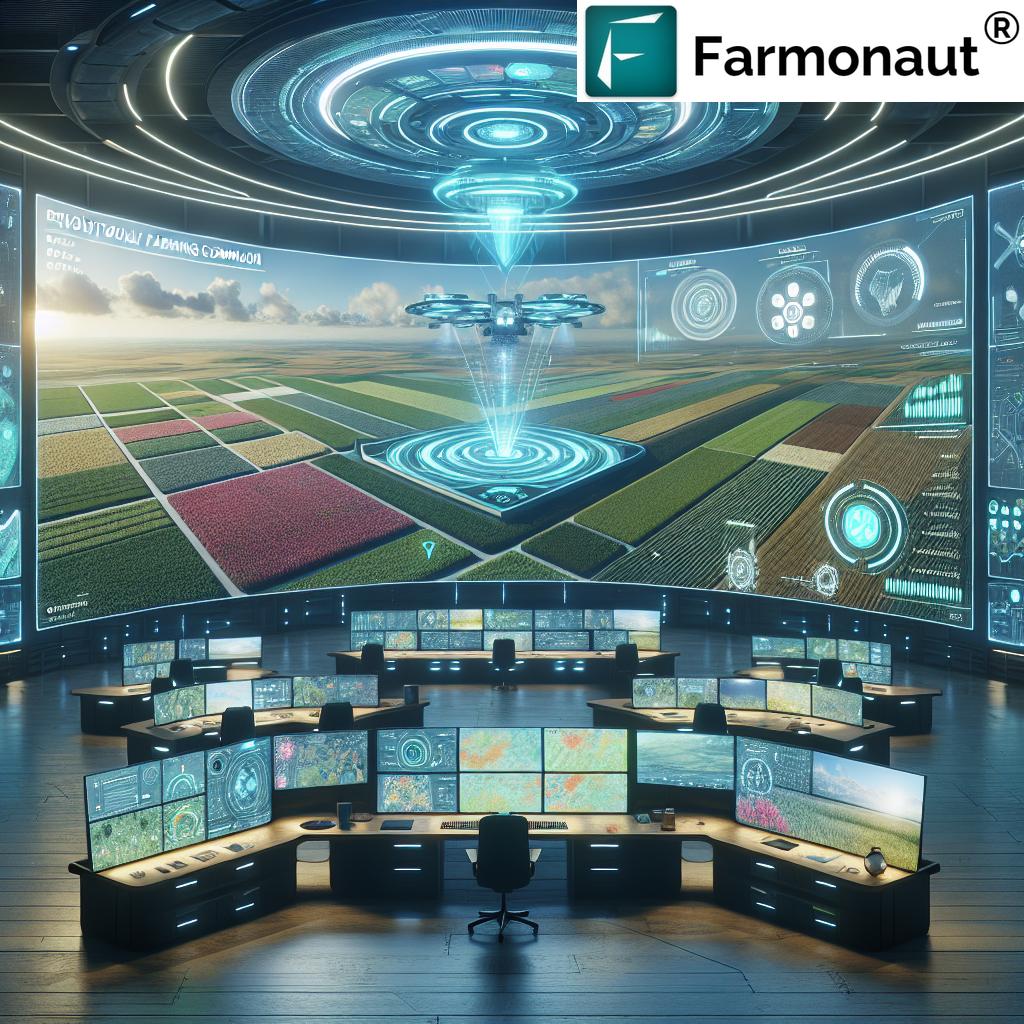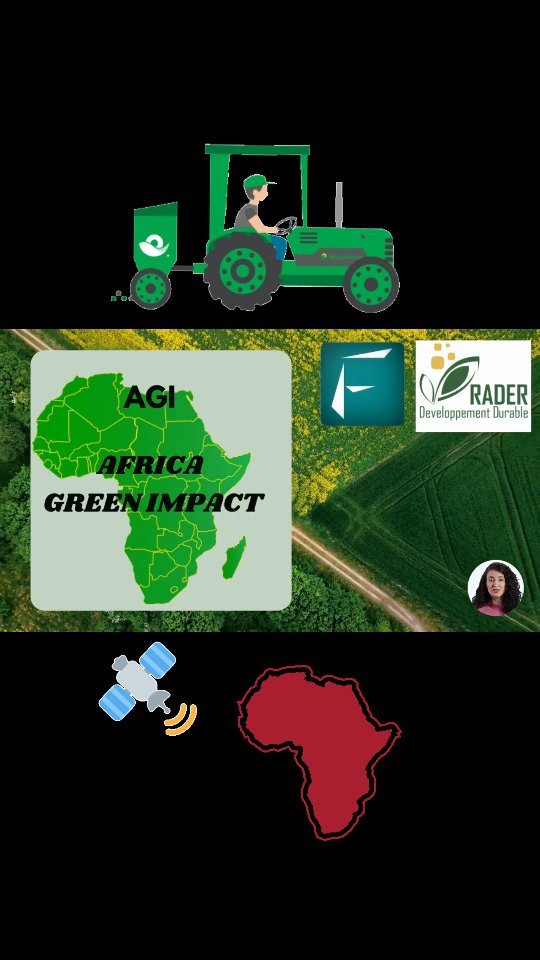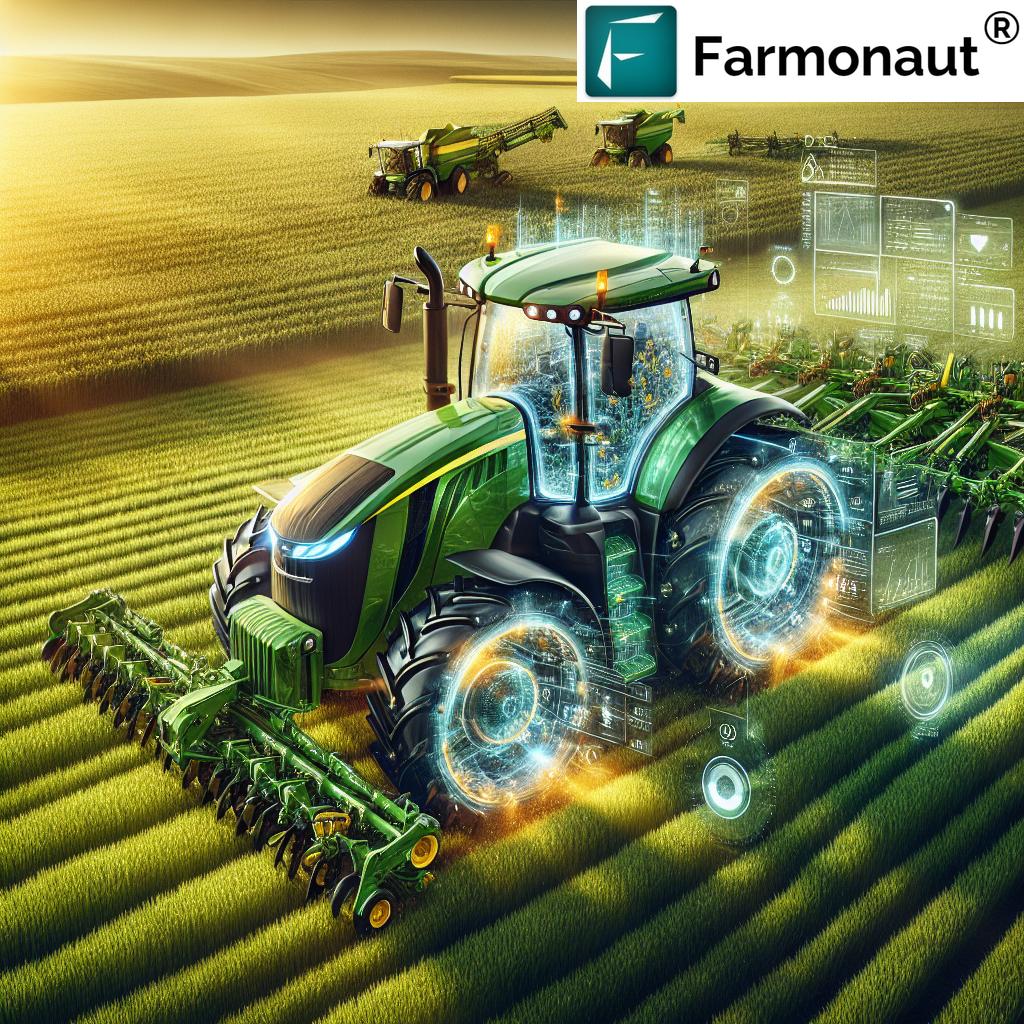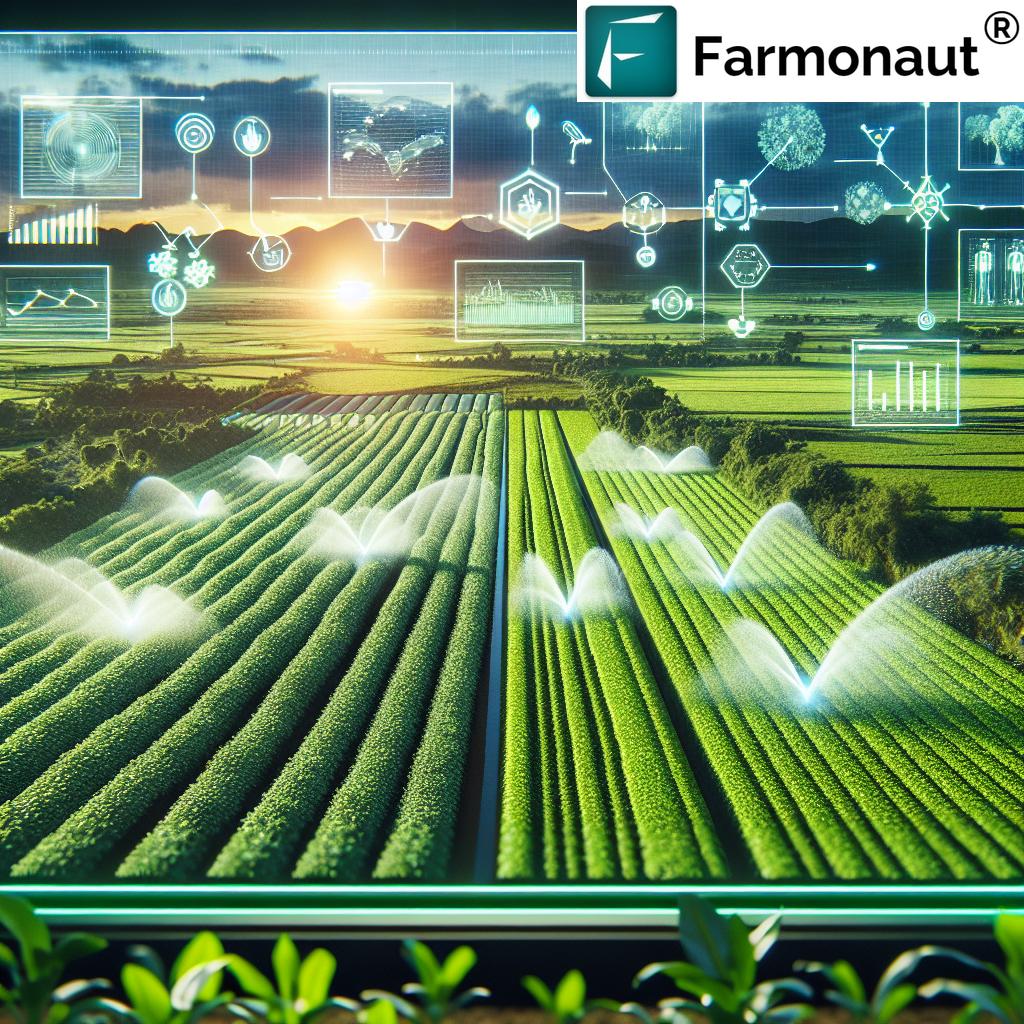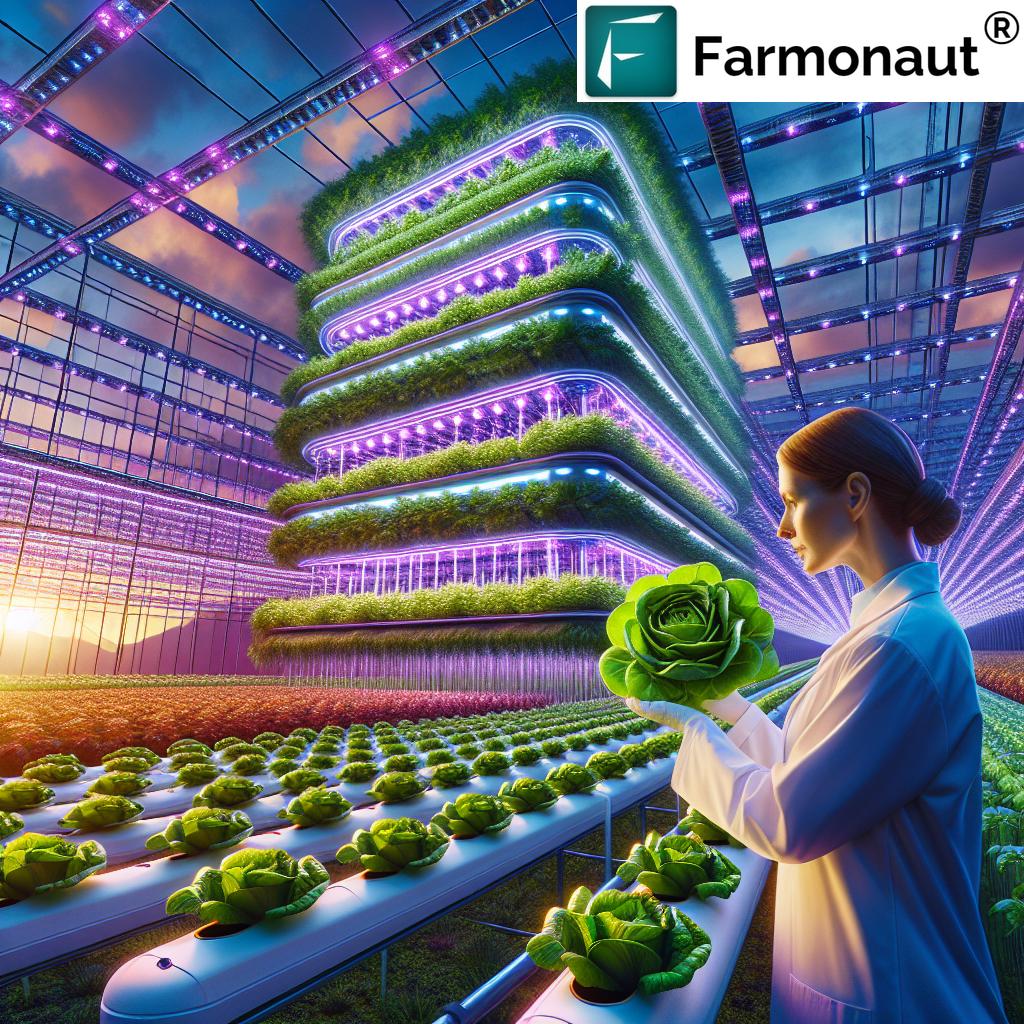Agriculture Smart Farming: 7 Shocking Innovations Revealed
“Smart sensors can reduce water usage in agriculture by up to 30% through real-time soil moisture monitoring.”
“Precision agriculture technologies have increased crop yields by an average of 15% in farms adopting smart farming solutions.”
The global demand for efficient, sustainable, and productive agricultural practices has never been higher, driven by climate challenges, population growth, and shifting resource dynamics. In this age of advanced technology, smart farming is rapidly transforming traditional agriculture, replacing guesswork with data-driven insight and automated systems.
In this comprehensive guide, we’ll uncover the 7 most shocking innovations revolutionizing agriculture:
from IoT-powered sensors to AI-driven field analytics, drones, blockchain traceability, automation, and beyond.
Let’s journey into the heart of precision agriculture—a future where farmers can optimize yields, reduce costs, conserve resources, ensure food security, and promote environmental sustainability with greater precision than ever before.
What Is Smart Farming & Precision Agriculture?
Smart farming—also recognized as precision agriculture—is the integration of advanced technologies such as IoT devices, artificial intelligence, data analytics, robotics, and cloud computing into everyday agricultural practices.
At its core, smart farming leverages real-time data collection and analysis to improve productivity, increase efficiency, and enhance sustainability. It empowers farmers to make informed decisions on resource allocation, irrigation, crop health management, and operational optimization—driving higher yields with lower costs.
How does smart farming optimize agriculture?
By using smart sensors to monitor soil moisture, drones for crop health analysis, AI algorithms for yield prediction, and automation for reduced labor input, we’re entering an era of true digital transformation in agriculture.
Primary Keyword Focus: Smart Farming, Precision Agriculture
- Combines technologies—from satellites to robotics—for enhanced farming outcomes.
- Enables resource optimization, data-based decisions, and higher efficiency in field operations.
- Supports sustainable farming technologies and minimizes environmental impact.
Let’s now dive into the top 7 innovations that are shocking the farming world and reshaping the future of agriculture.
Agriculture Smart Farming: 7 Shocking Innovations Revealed
With each passing season, agriculture is witnessing game-changing transformations, powered by a digital revolution across the globe. Let’s explore these seven shocking smart farming innovations that are boosting crop yields, optimizing resource use, and ensuring the sustainability of the future farm.
-
IoT Sensors & Connected Devices
- How it works: Internet of Things (IoT in agriculture) comprises soil moisture sensors, temperature/humidity meters, and weather stations—deployed across farm fields to collect real-time data on soil health, crop conditions, and climate changes.
- Impact: Enables informed, data-driven decisions about irrigation, fertilizer application, and pest management. Reduces unnecessary water/chemical use and boosts operational efficiency.
- Benefits: Water savings, enhanced crop yields, resource optimization, and lower input costs.
- Farmonaut Application: Farmonaut uses satellite imagery and AI analytics on soil moisture and crop health, providing actionable insights via a user-friendly platform.
-
Drones for Crop Monitoring
- How it works: Drones equipped with high-resolution cameras and multispectral sensors capture aerial images across vast fields, monitoring plant health, water stress, pest infestation, and more.
- Impact: Quickly assesses field conditions that would take days to scout manually, identifies issues for targeted intervention, and enables precision agriculture.
- Benefits: Rapid data collection, reduced labor, improved yield forecasts, and efficient crop management.
-
Autonomous Farm Equipment
- How it works: Driverless tractors, planters, and harvesters use integrated GPS, AI, and machine learning for accurate navigation and task execution with minimal human intervention.
- Impact: Reduces labor costs and errors, allows 24/7 operations, and ensures precise seed planting and crop maintenance.
- Benefits: Increased operational efficiency, reduced reliance on manual labor, and optimal resource allocation.
-
Artificial Intelligence & Machine Learning in Agriculture
- How it works: AI and machine learning algorithms process vast datasets (weather, soil, field imagery) to provide forecasts, disease/pest predictions, yield modeling, and automated decision support.
- Impact: Empowers farmers to act on predictive insights—mitigating losses from weather or pests, optimizing irrigation schedules, and maximizing profit.
- Farmonaut’s Jeevn AI Advisory: Delivers customized farm management advice, combines satellite imagery and weather data, and supports yield and input optimization.
-
Cloud Computing & Agricultural Data Analytics
- How it works: Collected agricultural data is uploaded to the cloud—where it is stored, processed, and analyzed using advanced analytics tools accessible from anywhere.
- Impact: Scalable data storage, remote access, and real-time collaboration. Enables better decisions on planting, irrigation, and logistics.
- Benefits: Centralized data, high-quality analytics, and seamless farm management—even on large scales.
-
Smart Irrigation Systems
- How it works: Automated watering systems (drip irrigation, pivot irrigation) leverage weather data and soil moisture sensors to adjust schedules in real time—delivering water only when and where needed.
- Impact: Reduces water waste, lowers energy and input usage, and promotes healthy, resilient crops.
- Benefits: Higher water-use efficiency (up to 30% savings), improved crop health, and less environmental impact.
-
Blockchain Traceability & Carbon Footprinting
- How it works: Every step of the food supply chain—from planting to packaging and transport—is recorded via secure, immutable blockchain ledgers. Concurrently, carbon footprint tracking lets farmers see and reduce their environmental impact.
- Impact: Ensures product authenticity and safety, allows traceability for consumers/partners, and encourages greener farming.
- Farmonaut Platform Examples: Blockchain-based product traceability for brands; carbon footprinting for compliance and sustainability.
Comparative Impact Table of 7 Smart Farming Innovations
| Innovation Name | Technology Type | Primary Function | Estimated Yield Increase (%) | Estimated Resource Savings (%) | Environmental Impact | Adoption Potential |
|---|---|---|---|---|---|---|
| IoT Sensors & Connected Devices | IoT in agriculture | Collect soil/crop data for informed decisions | 12–20% | Up to 30% | Significant water and chemical reduction | High |
| Drones for Crop Monitoring | Drones, Imaging | Aerial field surveys, disease/pest detection | 10–15% | 10–18% | Less chemical/fuel use, early issue resolution | Medium–High |
| Autonomous Farm Equipment | AI, Robotics | Plowing, planting, harvesting autonomously | 8–16% | Up to 20% | Reduced emissions, efficient operations | Medium |
| Artificial Intelligence in Farming | AI, Machine Learning | Crop modelling, forecasting, automation | 10–18% | 15–25% | Minimizes wastage, improves yields | High |
| Cloud Computing & Analytics | Cloud, Big Data | Centralizes data, enables analytics | 8-14% | 12–20% | Informs sustainable resource use | High |
| Smart Irrigation Systems | IoT, Automation | Automated, adaptive watering schedules | 7-14% | Up to 30% | Major water savings, soil protection | Medium–High |
| Blockchain Traceability & Carbon Footprinting | Blockchain, IoT | Trace product journey; track/environmental impact | 5–10% | 10–18% | Promotes transparency & reduces carbon emissions | Medium |
Farmonaut’s Affordable, Data-Driven Farming Revolution
Farmonaut stands as a pioneer in precision agriculture, democratizing access to smart farming for farmers worldwide. By offering advanced satellite-based monitoring, AI-powered farm insights, blockchain traceability, and resource management tools, Farmonaut integrates modern technology into traditional practices—cost-effectively and at scale.
- Satellite Crop Health Monitoring: Our platform utilizes multispectral satellite imagery to detect early issues in soil moisture, vegetation (NDVI), and overall crop health.
- Jeevn AI Advisory System: This service delivers real-time, AI-powered recommendations—including custom irrigation, disease management, and weather forecast alerts. Learn more about customized advisory: Farmonaut Crop Plantation/Farm Advisory
- Blockchain Product Traceability: Our traceability platform (see product traceability use case) secures your supply chain, assuring partners and consumers of food authenticity from farm to fork.
- Carbon Footprinting & Sustainability: Farmonaut enables you to monitor emissions and take actionable steps for greener, compliant farm practices. (discover carbon footprinting service)
- Resource & Fleet Management: Our platform offers efficient logistics and fleet tracking suited to agribusinesses of any scale (learn about fleet management).
- Crop Loan and Insurance Verification: By using satellite imagery verification, we simplify and secure the process for both farmers and financial institutions. (see loan & insurance tools)
Most importantly, Farmonaut removes the expensive hardware barrier—making smart, data-centric agriculture affordable for smallholder farmers and scalable for large enterprises. Try the Farmonaut App now: Access our Web, iOS & Android Apps.
For developers and agritech businesses seeking to build with satellite and weather data, integrate with the Farmonaut API.
Get started here:
Farmonaut API |
API Developer Docs
“Smart sensors can reduce water usage in agriculture by up to 30% through real-time soil moisture monitoring.”
Affordable Subscriptions for Every Farm
Choose a Farmonaut Subscription Plan suited to individual farms, cooperatives, large agribusinesses, or institutions. Our modular pricing is based on acreage and update frequency—offering the flexibility and scalability your operation needs.
Smart Farming Applications & Benefits
How Smart Farming Systems Transform Agriculture
- Resource Optimization: With IoT in agriculture, farmers effectively track water, fertilizer, and energy consumption—optimizing inputs for each crop and reducing waste.
- Environmental Impact Reduction: Sustainable farming technologies help lower carbon footprints, minimize chemical run-off, and ensure eco-friendly operations.
- Labor Reduction: Automation—like autonomous tractors and smart irrigation—cuts the need for manual labor, improving operational efficiency and scalability.
- Food Security & Quality: Data-driven monitoring ensures fresher, safer, and more traceable food—strengthening consumer trust and supporting global supply chains.
- Enhanced Collaboration: Cloud-based platforms enable remote management and better collaboration among stakeholders—boosting farm-to-market transparency and efficiency.
Example: A farmer using the Farmonaut Smart Irrigation System leverages AI-powered scheduling and real-time soil data for maximum yields—saving water, time, and money.
Special Features for Agribusiness & Corporate Customers
- Transparency & Trust: With blockchain traceability solutions, track agricultural produce from field to shelf.
- Environmental Compliance: Carbon footprinting tools help large-scale farms & companies demonstrate sustainability to partners, investors, and governments.
Real-World Benefits of Automation in Agriculture
- 24/7 Operations: Automated equipment operates around the clock, maximizing efficiency and minimizing risks of seasonal labor shortages.
- Remote Management: Cloud and mobile platforms empower farmers to monitor, analyze, and control farming remotely—from any device, anywhere.
- Precision Inputs: Reduce expenses, minimize environmental harm, and ensure sustainable yields thanks to actionable, crop-level insights.
How to Access Farmonaut Smart Farming Systems
- For Individual Farmers: Download the Farmonaut mobile app (Android or iOS) or use the web app to immediately unlock satellite crop monitoring and AI-driven farm analytics.
- Agribusinesses & Cooperatives: Manage large estates, plantations, or multiple fields with centralized dashboards and fleet/resource management solutions (see our large-scale management app).
- Developers & Tech Integrators: Access satellite and weather data via Farmonaut’s API and developer documentation for custom applications.
- Financial Institutions: Use satellite-based audit tools for crop loan and insurance verification (learn more here).
Challenges and Considerations in Modern Smart Agriculture
- Initial Investment: High set-up and technology costs may be a hurdle for smallholder farmers—Farmonaut addresses this by offering affordable subscription plans and removing hardware dependencies.
- Technical Complexity: Operating, maintaining, and integrating multiple systems requires training and technical education.
- Data Privacy & Security: With cloud-based analytics and connected devices, ensuring robust cybersecurity and safeguarding agricultural data are critical.
- Labor Displacement: Automation may reduce traditional farm jobs. However, it also creates skilled employment opportunities in system management and data analysis.
- Access Inequality: Ensuring technology adoption across various regions and farm sizes is vital to prevent gaps in agricultural productivity.
Overcoming these challenges requires continued research, user-friendly apps, policy support, awareness, and, above all, a commitment to making smart farming accessible and inclusive.
The Future of Smart Farming: Where Are We Headed?
The future of agriculture is bright, digital, and collaborative. Ongoing research in AI, cloud computing, IoT, and agricultural robotics will continue to make precision agriculture smarter, more affordable, and readily accessible.
- Smarter Automation: We will see greater use of AI-enabled robotics, not just in plowing and harvesting, but across diagnostics, logistics, and supply chain transparency.
- Decentralized Data & Open APIs: Interoperable cloud platforms, like those offered by Farmonaut, empower users worldwide to harness real-time insights—whether you’re a farmer, agribusiness, or developer.
- Sustainability at Forefront: Rising climate pressures, compliance needs, and market demand for sustainable food will fuel innovations in carbon reduction, resource optimization, and traceability.
- Global Accessibility: Smart farming will become mainstream—enabling smallholder farmers in every region to enjoy the efficiencies typically reserved for large-scale operations.
- AI-Driven Decision Ecosystems: Platforms like the Jeevn AI Advisory System will become even more precise and predictive, automating schedules for irrigation, planting, and harvesting.
By embracing smart technologies—from sensors to blockchain—we can ensure food security, environmental stewardship, and economic prosperity for future generations. The time to innovate is now!
FAQs: Your Smart Farming Questions Answered
What is smart farming?
Smart farming is the use of advanced technologies—such as IoT sensors, artificial intelligence, drones, and automation—to enhance the efficiency, productivity, and sustainability of agricultural practices.
How does IoT in agriculture work?
IoT in agriculture uses interconnected devices (sensors, meters, weather stations) to collect and transmit real-time data on soil, crop health, and environmental conditions. This data helps farmers make better decisions on irrigation, fertilization, and pest management.
What are the benefits of precision agriculture?
Precision agriculture enables farmers to apply inputs (water, fertilizer, pesticides) exactly where and when needed, resulting in higher yields, cost savings, reduced waste, improved environmental impact, and greater sustainability.
How can Farmonaut help my farm?
Farmonaut provides affordable, satellite-based crop health monitoring, AI-powered advisory tools, blockchain traceability for supply chains, and resource/fleet management solutions. The platform helps boost yields, save resources, and increase sustainability for farms of all sizes.
How can I access Farmonaut’s smart farming solutions?
You can access Farmonaut via web, Android, or iOS apps for real-time monitoring and insights. API integration is also available for developers and businesses.
Is smart farming only for large, commercial farms?
No—modern platforms like Farmonaut are designed to deliver precision agriculture benefits to smallholder and medium farms as well, making technology accessible regardless of farm size.
Can I trace my supply chain with Farmonaut?
Yes. Using Farmonaut’s blockchain traceability module, you can ensure full transparency and trustworthiness from field to consumer.
Does Farmonaut provide crop loan and insurance verification?
Absolutely. Farmonaut offers satellite-based verification tools making crop loan and agricultural insurance processes safer and more efficient.
Smart farming is more than a trend. It’s the next step in the digital transformation of agriculture—improving yields, optimizing resources, and driving sustainability for farms of all sizes, everywhere.
Ready to join the smart farming revolution? Get started with Farmonaut’s cutting-edge platform today!
Smart farming, or precision agriculture, integrates IoT, AI, drones, data analytics, and cloud computing into agricultural practices—helping farmers make data-driven decisions, optimize resource use, and improve yields and sustainability. Farmonaut offers affordable, subscription-based, satellite-powered platforms for real-time crop health monitoring, AI advisory, blockchain traceability, and environmental compliance—making state-of-the-art farming accessible to all.


